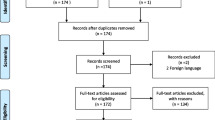Abstract
A recent series of deaths in previously healthy dogs in Victoria, Australia associated with the ingestion of raw meat contaminated by indospicine derived from native Australian plants of the Indigofera species draws attention to the potential that exists for herbal toxicity in domestic animals. Although the efficacy of herbal remedies generally remains unproven in domestic animals, herbal preparations are being increasingly used as supplements and treatments. Issues with incorrect ingredients, inadequate processing, faulty, incomplete or inaccurate product labelling, contamination with toxins, adulteration with undeclared pharmaceutical agents and herb-herb interactions are well recognized as causes of adverse effects in humans. However, apart from of the effects of noxious weed species, the literature on herbal toxicity in domestic animals is sparse. Thus, the forensic evaluation of cases of suspected poisoning in domestic animals should also encompass an accurate description the type and dose of any herbal preparations that may have been recently administered.
Similar content being viewed by others
References
Byard RW, Musgrave I, Maker G, Bunce M. What are the risks to the Australian community from herbal products? Med J Aust. 2017;206:86–90.
Byard RW. The potential forensic significance of traditional herbal medicines. J Forensic Sci. 2010;55:89–92.
Crighton E, Coghlan ML, Farrington R, Hoban CL, Power MWP, Nash C, et al. Toxicological screening and DNA sequencing detects contamination and adulteration in regulated herbal medicines and supplements for diet, weight loss and cardiovascular health. J Pharm Biomed Anal. 2019;30:112834.
Blacksell L, Byard RW, Musgrave IF. Forensic problems with the composition and content of herbal medicines. J Forensic Leg Med. 2014;23:19–21.
Byard RW, Musgrave I. Herbal medicines and forensic investigations. Forensic Sci Med Pathol. 2010;6:81–2.
Gilbert JD, Musgrave I, Hoban C, Byard RW. Lethal hepatocellular necrosis associated with herbal polypharmacy in a patient with chronic Hepatitis B infection. Forensic Sci Int. 2014;241C:138–40.
Farrington R, Musgrave I, Byard RW. Potential implications for the use of herbal preparations in childhood. Acta Paediatr. 2019;108:419–22.
Farrington R, Musgrave I, Nash C, Byard RW. Potential forensic issues in overseas travellers exposed to local herbal products. J Forensic Leg Med. 2018;60:1–2.
Hashemi SR, Davoodie H. Herbal plants and their derivatives as growth and health promoters in animal nutrition. Vet Res Com. 2011;35:169–80.
Russo R, Autore G, Severino L. Pharmaco-toxicological aspects of herbal drugs used in domestic animals. Nat Prod Com. 2009;4:1777–84.
Wynn SG, Fougère BJ. Veterinary herbal medicine: a systems-based approach. Vet Herbal Med. 2007:291–409.
AVPMA Complementary animal health products: guidelines for veterinary herbal and marine-derived remedies. https://apvma.gov.au/node/490. Accessed 23 July 2021.
Plants poisonous to livestock and other animals. Poisonous plants. ansci.cornell.edu/index.html. Accessed 23 July 2021.
Poppenga RH. Risks associated with the use of herbs and other dietary supplements. Vet Clin Nth Am: Equ Pract. 2001;17:455–77.
Ooms TG, Khan SA, Means C. Suspected caffeine and ephedrine toxicosis resulting from ingestion of an herbal supplement containing guarana and ma huang in dogs: 47 cases (1997–1999). J Am Vet Med Assoc. 2001;18:225–9.
Sudekun M, Poppenga RH, Raju N, Braselton WE. Pennyroyal oil toxicosis in a dog. J Am Vet Med Assoc. 1992;200:817–8.
Lee KW, Yamato O, Tajima M, Kuraoka M, Omae S, Maede Y. Hematologic changes associated with the appearance of eccentrocytes after intragastric administration of garlic extract to dogs. Am J Vet Res. 2000;61:1446–50.
Pearson W, Boermans HJ, Bettger WJ, McBride BW, Lindinger MI. Association of maximum voluntary dietary intake of freeze-dried garlic with Heinz body anemia in horses. Am J Vet Res. 2005;66:457–65.
What is St. John's Wort Poisoning? https://wagwalking.com/condition/st-johns-wort-poisoning#:~:text=While%20St.%20John%E2%80%99s%20wort%20is%20helpful%20for%20certain,lead%20to%20photosensitization%20and%20various%20other%20health%20issues. Accessed 23 July 2021.
Fukunaga K, Orito K. Time-course effects of St John’s wort on the pharmacokinetics of cyclosporine in dogs: interactions between herbal extracts and drugs. J Vet Pharmacol Ther. 2012;35:446–51.
Kosalec I, Cvek J, Tomić S. Contaminants of medicinal herbs and herbal products. Arh Hig Rada Toksikol. 2009;60:485–501.
Toxic plants for dogs. Agriculture Victoria. https://agriculture.vic.gov.au/livestock-and-animals/animal-welfare-victoria/dogs/health/toxic-plants-for-dogs. Accessed 23 July 2021.
Cook H. Toxin in native plant linked to spate of Victorian dog deaths. The Age 21 July 2021. https://www.theage.com.au/national/victoria/toxin-in-native-plant-linked-to-spate-of-victorian-dog-deaths-20210721-p58bmw.html. Accessed 23 July 2021.
Author information
Authors and Affiliations
Corresponding author
Additional information
Publisher's Note
Springer Nature remains neutral with regard to jurisdictional claims in published maps and institutional affiliations.
Rights and permissions
About this article
Cite this article
Byard, R.W., Musgrave, I. The potential side effects of herbal preparations in domestic animals. Forensic Sci Med Pathol 17, 723–725 (2021). https://doi.org/10.1007/s12024-021-00418-5
Accepted:
Published:
Issue Date:
DOI: https://doi.org/10.1007/s12024-021-00418-5




